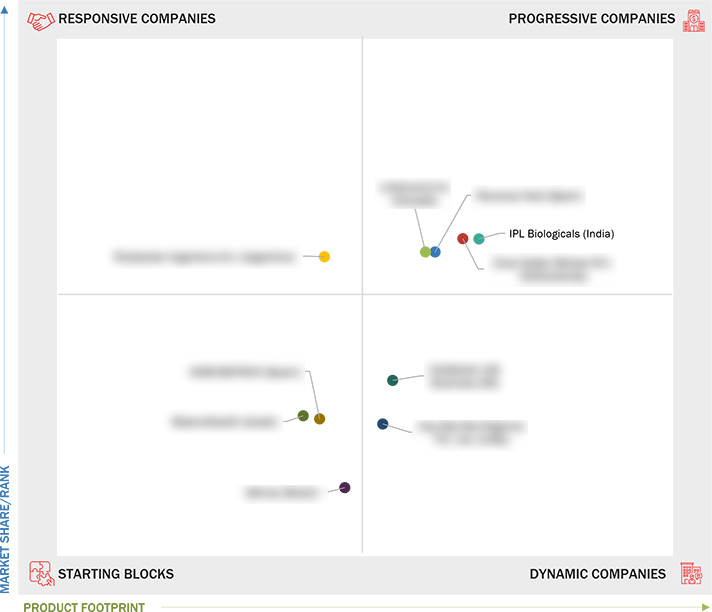Comparing 10 vendors in Plant Biotechnology Startups across 0 criteria.
According to the US Department of Agriculture, plant biotechnology is a set of techniques used to adapt plants for specific needs or opportunities. Plant biotechnologies supporting the development of new varieties and traits include genetics and genomics, marker-assisted breeding (MAB), biotech (genetically engineered) crops, and others. Biotechnology enables researchers to identify and map genes, determine their functions, selectively breed for desirable genetic traits, and transfer specific genes into plants to enhance targeted characteristics.
Market Leadership Quadrant
1.1 Study Objectives
1.2 Market Definition
1.3 Study Scope
1.3.1 Markets Covered and Regional Scope
1.3.2 Inclusions and Exclusions
1.3.3 Years Considered
1.4 Currency Considered
1.5 Unit Considered
1.6 Limitations
1.7 Stakeholders
2.1 Introduction
2.2 Market Dynamics
2.2.1 Drivers
2.2.1.1 Rise in seed replacement rate
2.2.1.2 High adoption of biotech crops
2.2.1.3 Growing demand for high-value crops
2.2.1.4 Use of plant biotechnology to combat climatic changes
2.2.2 Restraints
2.2.2.1 Long approval period for new products
2.2.2.2 High R&D expenses on quality biotech seed development
2.2.3 Opportunities
2.2.3.1 Public-private partnerships in varietal seed development
2.2.3.2 Increasing use of molecular breeding technology
2.2.3.3 Increased production and yield of crops
2.2.4 Challenges
2.2.4.1 Unorganized new entrants with low profit-to-cost ratio
2.2.4.2 Lack of availability and access to high-quality plant biotechnology products
2.3 Trends/Disruptions Impacting Customer Business
2.4 Value Chain Analysis
2.5 Ecosystem Analysis
2.6 Investment and Funding Scenario
2.7 Technology Analysis
2.7.1 Key Technologies
2.7.2 Complementary Technologies
2.7.3 Adjacent Technologies
2.8 Patent Analysis
2.9 Trade Analysis
2.10 Porter’s Five Forces Analysis
2.10.1 Threat of New Entrants
2.10.2 Threat of Substitutes
2.10.3 Bargaining Power of Suppliers
2.10.4 Bargaining Power of Buyers
2.10.5 Intensity of Competitive Rivalry
3.1 Introduction
3.2 Key Player Strategies/Right to Win
3.3 Revenue Analysis
3.4 Market Share Analysis
3.5 Company Valuation and Financial Metrics
3.6 Brand/Product Comparison
3.7 Company Evaluation Matrix: Startups/SMEs
3.7.1 Progressive Companies
3.7.2 Responsive Companies
3.7.3 Dynamic Companies
3.7.4 Starting Blocks
3.7.5 Competitive Benchmarking: Startups/SMEs
3.7.5.1 Detailed list of key startups/SMEs
3.7.5.2 Competitive benchmarking of key startups/SMEs
3.8 Competitive Scenario
3.8.1 Product Launches
3.8.2 Deals
3.8.3 Expansions
3.8.4 Other Developments
4.1 AXEB BIOTECH
4.1.1 Business overview
4.1.2 Products/Solutions/Services offered
4.1.3 Recent developments
4.2 BotanoHealth
4.2.1 Business overview
4.2.2 Products/Solutions/Services offered
4.2.3 Recent developments
4.3 Enza Zaden Beheer B.V.
4.3.1 Business overview
4.3.2 Products/Solutions/Services offered
4.3.3 Recent developments
4.4 Gênica
4.4.1 Business overview
4.4.2 Products/Solutions/Services offered
4.4.3 Recent developments
4.5 IPL Biologicals
4.5.1 Business overview
4.5.2 Products/Solutions/Services offered
4.5.3 Recent developments
4.6 Kay Bee Bio-Organics Pvt. Ltd.
4.6.1 Business overview
4.6.2 Products/Solutions/Services offered
4.6.3 Recent developments
4.7 LALLEMAND INC
4.7.1 Business overview
4.7.2 Products/Solutions/Services offered
4.7.3 Recent developments
4.8 Rizobacter Argentina S.A.
4.8.1 Business overview
4.8.2 Products/Solutions/Services offered
4.8.3 Recent developments
4.9 Rovensa Next
4.9.1 Business overview
4.9.2 Products/Solutions/Services offered
4.9.3 Recent developments
4.10 Verdesian Life Sciences
4.10.1 Business overview
4.10.2 Products/Solutions/Services offered
4.10.3 Recent developments


 AgriBusiness Global
AgriBusiness Global
 Oct 2025
Oct 2025

